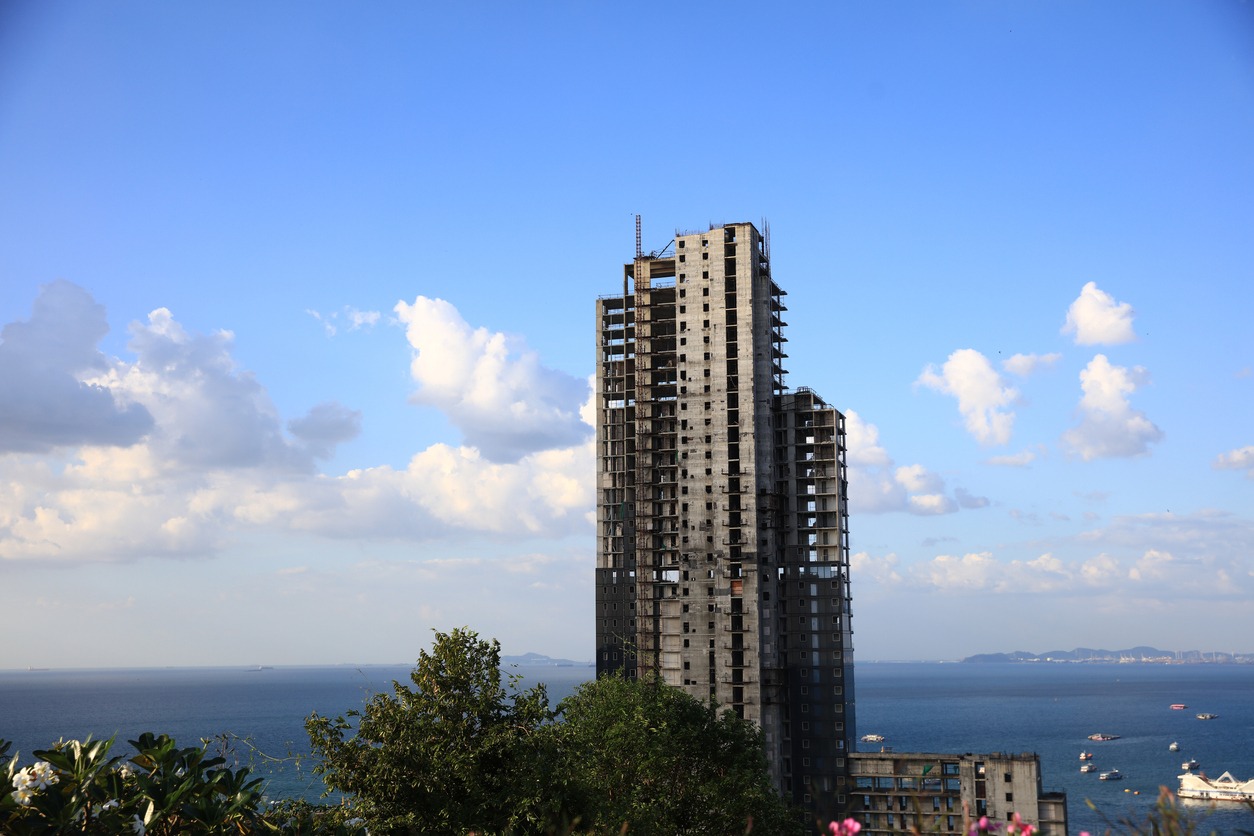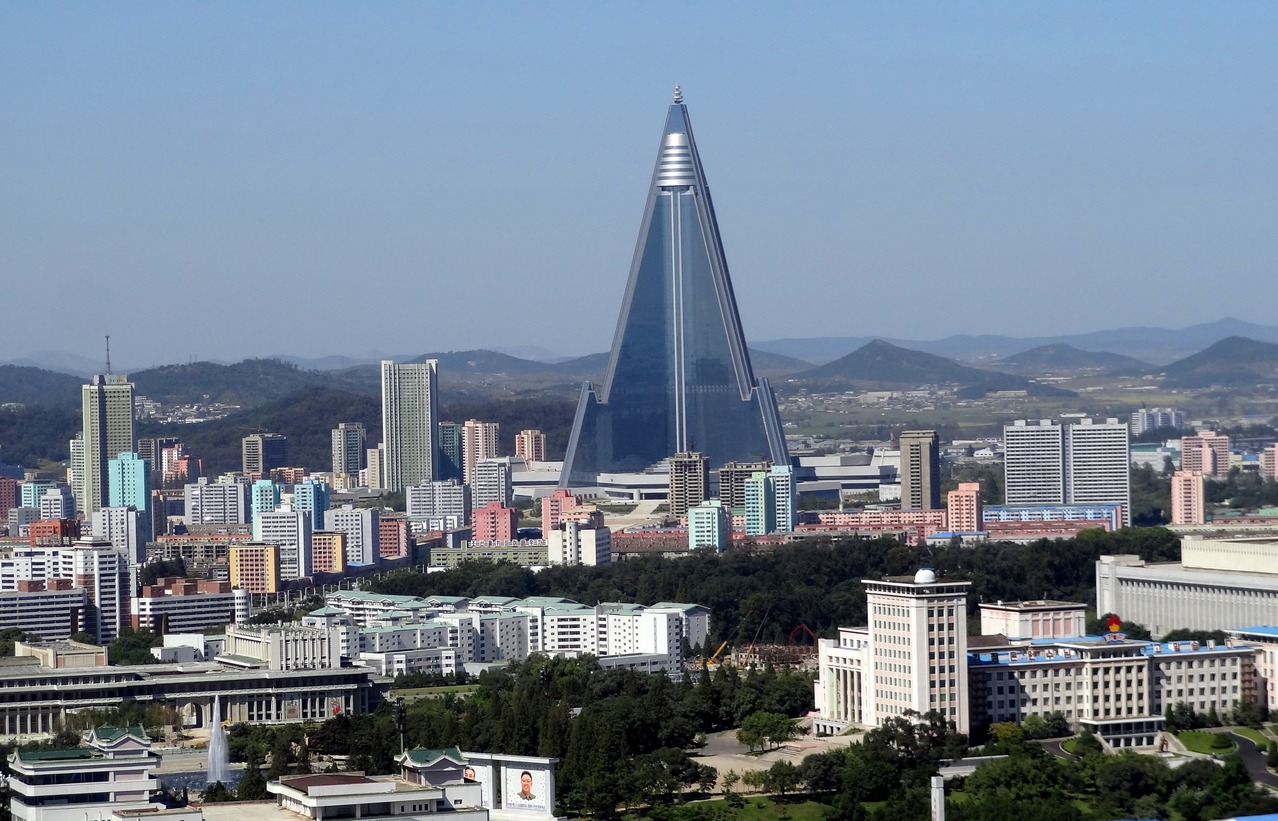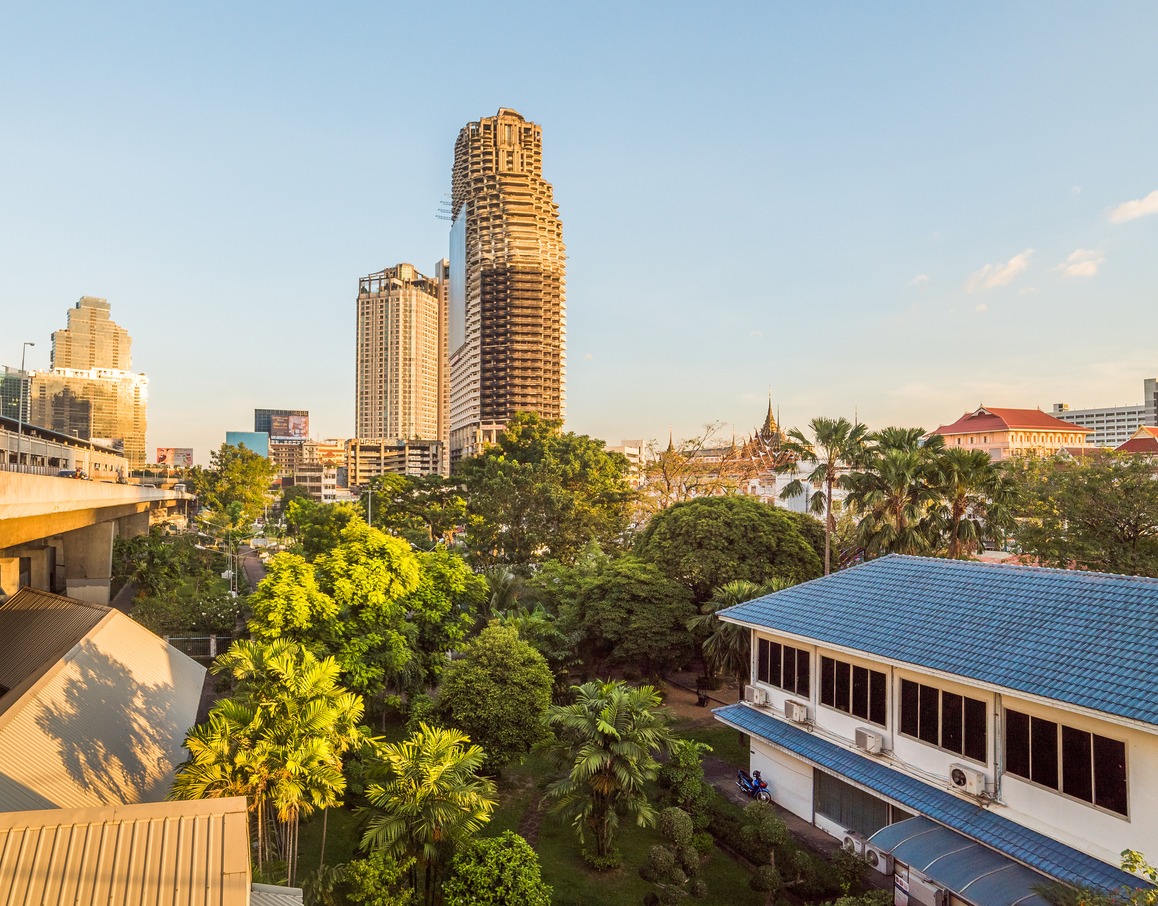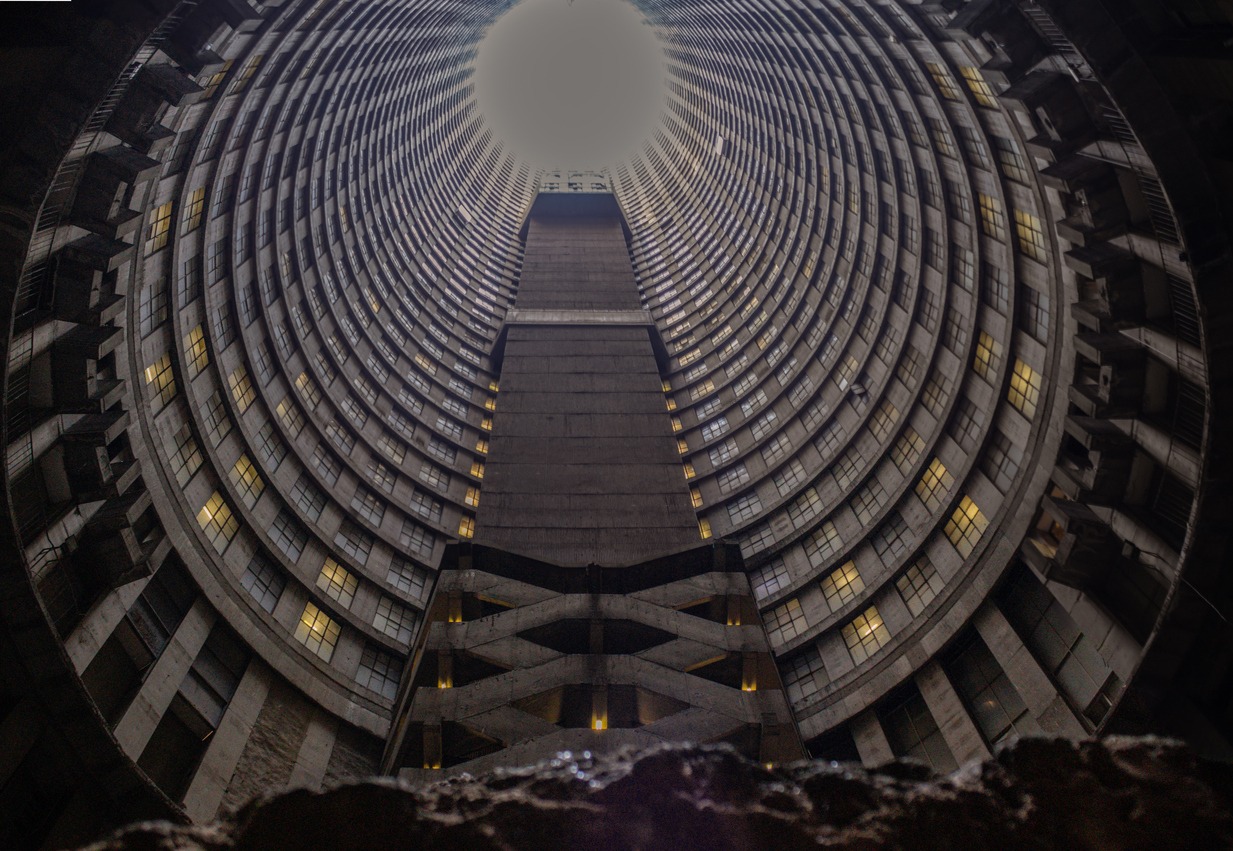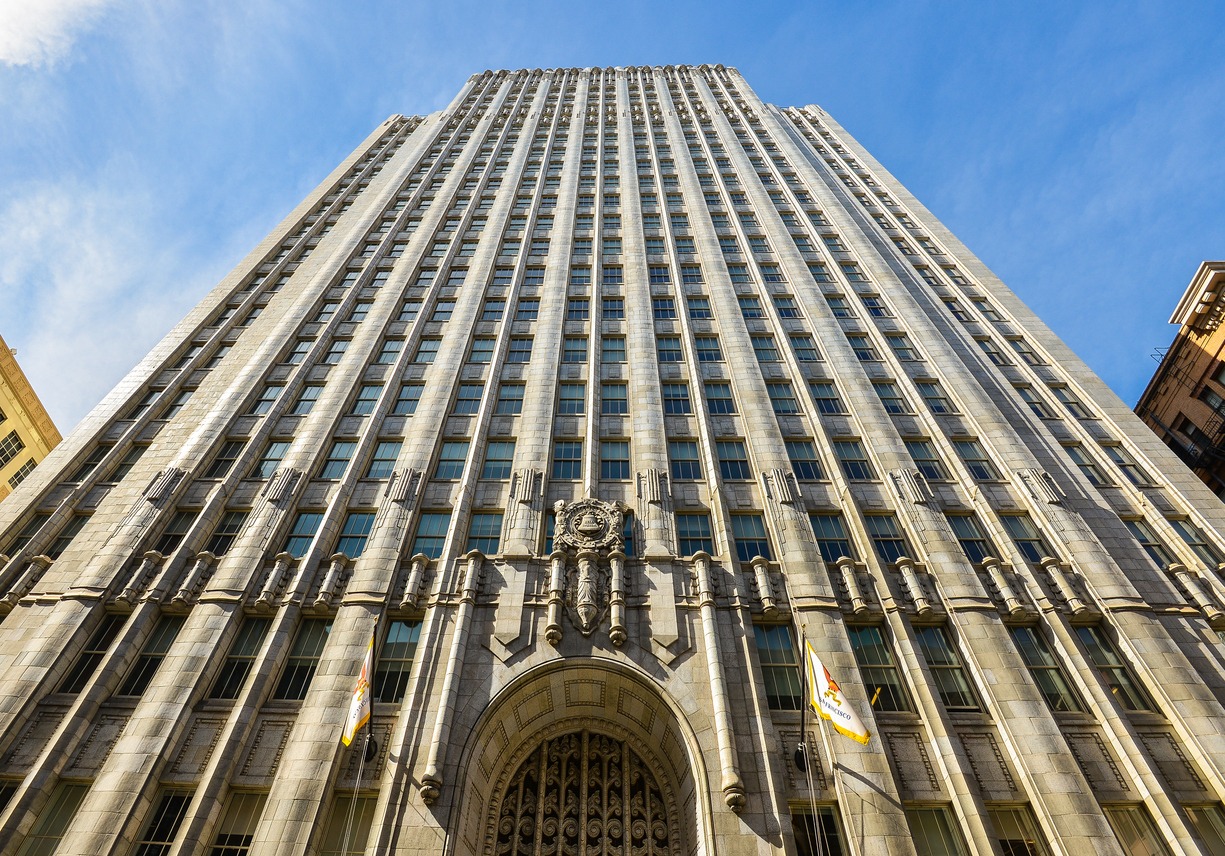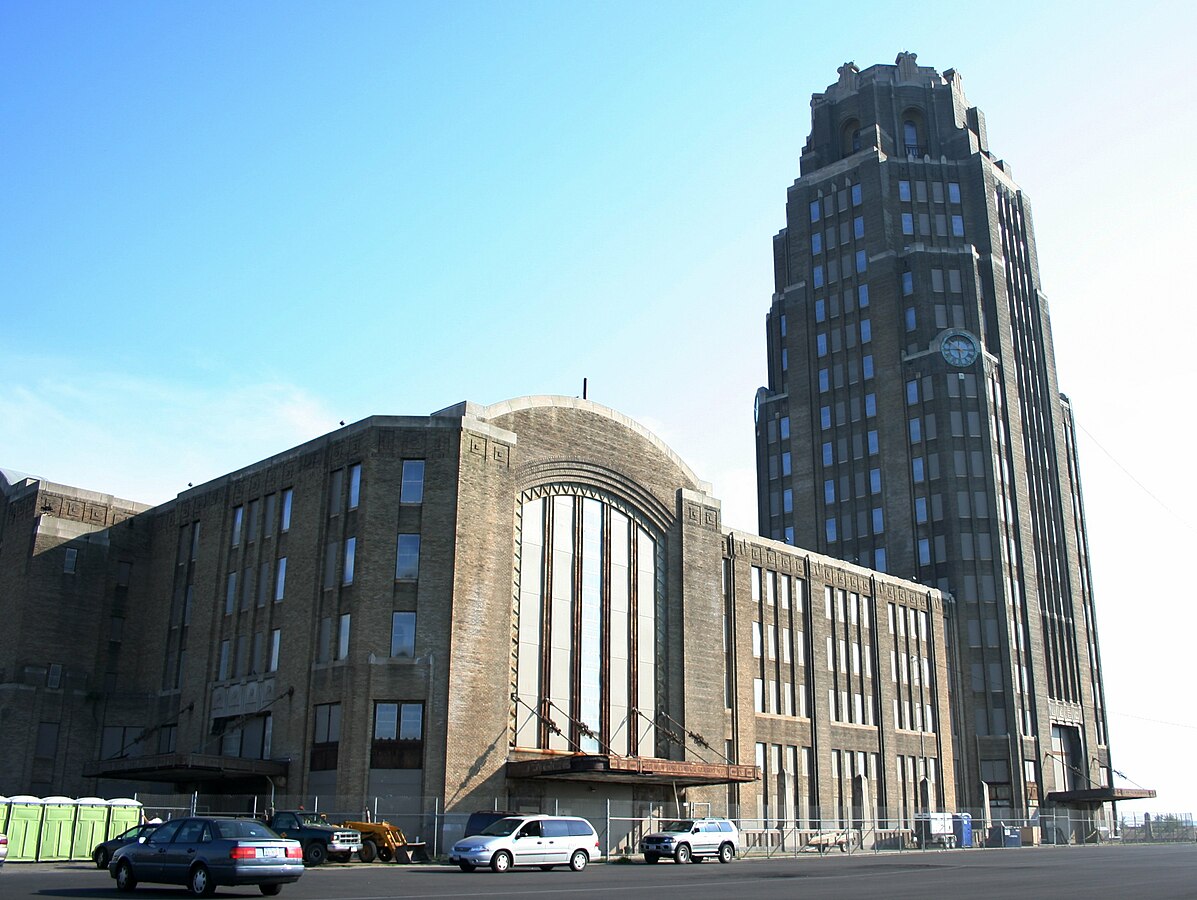In the heart of bustling cities across the globe, some of these once-gleaming giants of steel and glass now stand empty, their lofty heights echoing with the ghosts of their past. These abandoned skyscrapers, from the soaring structures of Detroit to the forgotten high-rises of Asia, are enigmatic urban giants that capture our imagination and curiosity.
In this article, we’re scaling the heights of these abandoned behemoths to uncover their stories. Each deserted tower has a tale to tell, a narrative woven from the fabric of economic booms and busts, changing urban landscapes, or ambitious projects that simply never came to fruition.
As we delve into the why and how of these abandoned structures, we uncover not just tales of architectural decay but stories of human aspiration and resilience. Join us on a journey through the eerie yet fascinating world of abandoned skyscrapers, where the view from the top tells an intriguing story of our ever-evolving urban environments.
Ryugyong Hotel, Pyongyang, North Korea
The Ryugyong Hotel in Pyongyang, North Korea, is a skyscraper that’s as enigmatic as it is towering. This 105-story pyramid-shaped building, dominating the Pyongyang skyline, has a history that’s intertwined with North Korea’s ambitions and challenges. Construction began in 1987, during a period when the country sought to showcase its economic and architectural prowess.
The hotel was planned to be the world’s tallest hotel, a symbol of North Korea’s development and modernity. With its sleek, futuristic design, the Ryugyong Hotel was meant to be a beacon of luxury and progress. But things didn’t go as planned. The construction coincided with the fall of the Soviet Union, North Korea’s key ally, leading to economic difficulties that brought the hotel’s construction to a grinding halt in 1992. The building, with its incomplete, bare concrete structure, stood as a towering reminder of the country’s economic and political struggles.
For over a decade, the Ryugyong Hotel remained untouched, a ghostly and unfinished monolith in the heart of Pyongyang. It wasn’t until 2008 that construction resumed, this time with the exterior being completed, including the installation of glass panels, giving it a more finished appearance. Despite these efforts, the hotel has never been fully completed or opened to the public. It remains a subject of fascination and speculation for the outside world, a monument to grand ambitions that have yet to be realized. The Ryugyong Hotel, often called the “Hotel of Doom,” remains shrouded in mystery, emblematic of North Korea’s isolation and the complexities of its place in the world.
Sathorn Unique Tower, Bangkok, Thailand
The Sathorn Unique Tower in Bangkok, Thailand, tells a story of dreams and despair, emblematic of the Asian financial crisis of the late 1990s. This 49-story skyscraper, now known as the “Ghost Tower,” was intended to be a luxurious residential complex, part of Thailand’s booming economy and rapid urban development in the 1990s.
Its construction began with high hopes and visions of grandeur, aiming to offer a blend of modern living spaces with stunning views of the bustling city and the winding Chao Phraya River. However, as the financial crisis hit in 1997, the tides turned dramatically. The project, like many others, was abruptly halted due to the developers’ financial constraints, leaving the tower in a state of eerie incompletion.
Since then, the Sathorn Unique Tower has become a haunting presence in the heart of Bangkok. Its unfinished, concrete skeleton looms over the city, a stark contrast to the vibrant life below. The building’s hollow floors and vacant, windowless frames have made it a subject of urban legends and a magnet for thrill-seekers and ghost hunters. Despite safety concerns and legal restrictions, the tower attracts those drawn to its post-apocalyptic allure. Over the years, it has unofficially become one of Bangkok’s most infamous urban exploration sites.
Ponte City Apartments, Johannesburg, South Africa
Ponte City Apartments in Johannesburg, South Africa, is a building with a history as deep and complex as the city it overlooks. This cylindrical skyscraper, the tallest residential building in Africa, was a symbol of modern luxury when it opened in 1975. Designed with an avant-garde hollow center, known as the “core,” Ponte City was originally coveted as an address for the affluent, offering panoramic views of Johannesburg. However, as the years passed and the socio-economic landscape of Johannesburg shifted, so too did the fate of Ponte City.
By the 1980s and 1990s, the building became intertwined with the city’s darker narratives. As the neighborhood around it declined, Ponte City’s gleaming image faded. It became a symbol of urban decay, notorious for crime and gang activity, a far cry from its luxurious beginnings. The building, once a beacon of prosperity, now reflected the challenges faced by the inner city. In recent years, however, there’s been a renewed interest in revitalizing Ponte City. Efforts to refurbish the building and improve its reputation have been underway, symbolizing not just the rebirth of a skyscraper but also the resilience and complexity of Johannesburg itself.
PacBell Building, San Francisco, USA
The PacBell Building in San Francisco, a grand Art Deco skyscraper, opened in 1925. This 26-story building was originally the Pacific Telephone & Telegraph Company headquarters, symbolizing the height of communication innovation at the time. Its striking architecture, complete with intricate terracotta detailing and a distinctive, tiered pyramid roof, made it a notable landmark in the city’s skyline.
However, as the telecommunications industry rapidly advanced, the PacBell Building gradually became less central to the operations of the evolving company. Eventually, the building was vacated, standing as a silent, albeit majestic, testament to a bygone era of communication technology. While it was left unused for a time, reflecting the shifts in the industry, the building has since found new life, repurposed for modern use while retaining its historic charm.
Buffalo Central Terminal, New York, USA
Buffalo Central Terminal in New York is a poignant symbol of the city’s rise and fall in the 20th century. Opened in 1929, this majestic Art Deco building was more than just a train station; it was a bustling hub of activity and a testament to Buffalo’s then-thriving industrial economy. The terminal’s 17-story tower, grand concourses, and elegant design reflected the optimism of the era. However, as the decades passed, Buffalo’s economic fortunes waned, and the advent of air travel and the interstate highway system led to a decline in rail travel.
The once-busy corridors of the Central Terminal fell quiet, and the station eventually closed its doors in 1979. Since then, the towering structure has stood largely vacant, a hauntingly beautiful relic of a bygone era. Though subject to vandalism and decay, the terminal still retains its architectural grandeur, symbolizing both the past glories and the resilience of the Rust Belt. Today, it captures the imagination of all who pass through its once-teeming halls, holding stories of a vibrant past and hopes for future restoration.
Conclusion
As we conclude our journey through these silent giants, the abandoned skyscrapers and structures from around the world, it’s clear that each tells a unique story. From the ambitious heights of the Ryugyong Hotel in North Korea to the haunting presence of the Buffalo Central Terminal in New York, these structures are more than just buildings. They are symbols of their cities’ dreams, challenges, and changes.
These abandoned structures stand as monuments to history, each with a tale that whispers to us of a past era and invites us to imagine what the future might hold. As we step back into the bustling rhythm of our lives, let’s carry with us the memory of these once-grand structures, contemplating the lessons they offer in resilience, transformation, and the enduring power of hope.

